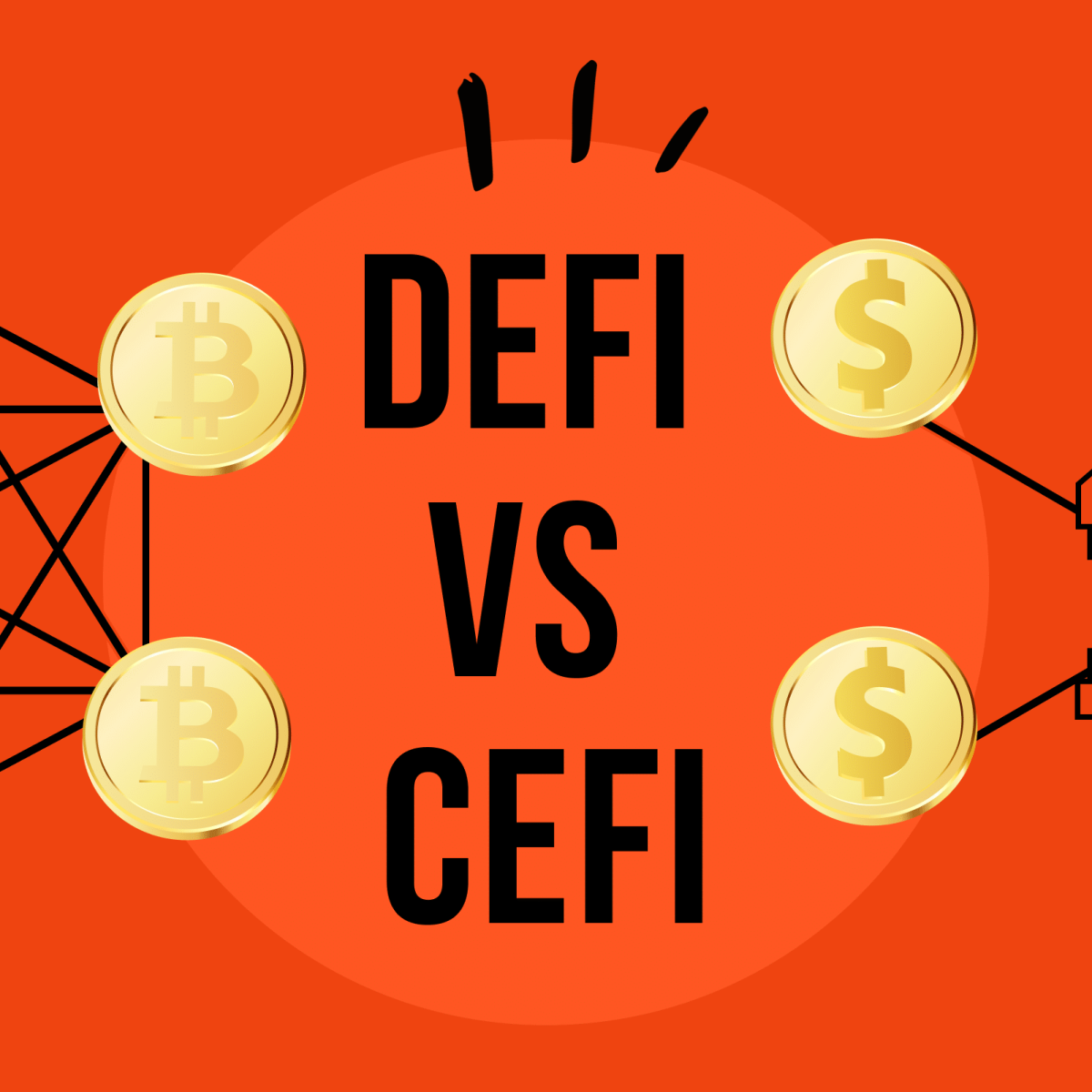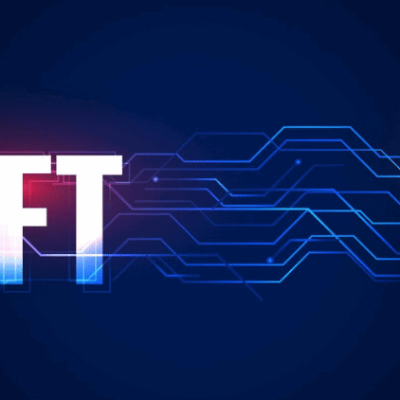The emergence of blockchain technology has transformed the financial industry, bringing new opportunities and alternatives to traditional financial services. Decentralized finance (DeFi) and centralized finance (CeFi) are two terms that have been widely discussed in recent years. Although they both relate to financial services, they are notably distinctive. In this article, we will explore the differences between DeFi and CeFi.
What Is Centralized Finance (CeFi)?
The meaning of CeFi and DeFi in crypto
CeFi refers to centralized financial services managed through centralized systems, where a single entity, such as a bank or a financial institution, manages user funds. Centralized financial organizations provide various financial services such as banking, lending, trading, and investment. Some of the features of CeFi include:
Centralized Exchange (CEX)
In the world of CeFi, centralized exchanges are used for trading digital assets. These exchanges are owned and operated by centralized entities such as banks or financial institutions.
To know how CEXs are different from DEXs, visit this page.
The Flexibility of Fiat Conversion
One of the features of CeFi services is the flexibility of fiat conversion. Users can effortlessly convert fiat currency into digital assets and vice versa, which is not that easy in the DeFi protocol. Thanks to this feature, users are free to manage their funds in the real world.
What Is Decentralized Finance? (DeFi)
How does DeFi compare to CeFi?
DeFi refers to a ground-breaking financial ecosystem that operates on a decentralized network. Unlike CeFi, DeFi does not rely on centralized entities to provide financial services. Instead, DeFi protocols are built on blockchain technology and run through smart contracts. Some of the features of DeFi include:
Permissionless
One of the defining features of DeFi is its permissionless nature. This means that anyone can access the DeFi ecosystem without requiring approval from any authority or entity. In traditional finance, banks and other financial institutions act as gatekeepers, deciding who can access their services. Users of CeFi must go through a complicated KYC process in order to access services, which requires them to share personal information or make a deposit. In contrast, DeFi operates on a decentralized network, allowing anyone with an internet connection to participate in the ecosystem.
Trustless
Another key feature of DeFi is trustlessness. In traditional finance, trust is established through intermediaries such as banks or financial institutions. These intermediaries act as a trusted third party that verifies transactions and manages user funds. However, in DeFi, trust is established through blockchain technology. Transactions are verified and recorded on a public blockchain, which eliminates the need for intermediaries. Due to the ability to inspect the underlying smart contract code, DeFi space boosts trust in banking services.
Quick Innovation
The DeFi ecosystem is characterized by quick innovation. Due to its open and permissionless nature, developers can easily build and deploy new applications on the blockchain without the need for any central authority’s approval. This has led to the creation of a wide range of DeFi applications, such as decentralized exchanges, lending platforms, insurance protocols, and many more. These applications are continuously evolving, providing DeFi users with innovative and efficient financial services.
We have an article explaining what DeFi is in detail.
How Is DeFi Different from CeFi?
The same objective is sought by both centralized and decentralized financial systems. They want to increase trading volume and popularize cryptocurrency trading. These two ecosystems accomplish their goals in different ways, though.
What are the characteristics of DeFi cryptocurrency projects?
Custody
Custody is one of the key differences between DeFi and CeFi. User assets are held in custody by financial institutions such as banks in CeFi, which means they must trust them with their money. DeFi services, on the other hand, allow consumers to keep custody of their funds, granting them complete control over their assets.
Trading of crypto assets
Another significant difference between DeFi and CeFi is how they handle the trading of crypto assets. In CeFi, trades are usually executed on centralized crypto exchanges owned by a single entity. In contrast, DeFi operates on decentralized exchanges (DEXs), which are open to everyone and do not require any intermediaries. With a decentralized exchange, traders may quickly sign up and trade their crypto assets directly with one another.
Transaction costs
Transaction costs are another area where DeFi and CeFi differ. In CeFi, transaction costs are commonly high due to the presence of intermediaries, while in DeFi, transaction costs are typically lower. Conversely, using DeFi requires sending transactions to the blockchain, so traders have to pay network fees.
Privacy
DeFi and CeFi differ in terms of privacy. CeFi verifies users’ identities and tracks their transactions, making it challenging for them to maintain their privacy. Meanwhile, DeFi allows users to keep their identities private when accessing the system.
Public verification
Public verification is yet another area where DeFi and CeFi differ. In CeFi, financial institutions are usually the only ones with access to the information needed to verify transactions. In contrast, DeFi operates on a public blockchain, which means that everyone can verify transactions.
Atomicity
In blockchain technology, transactions can involve multiple financial actions that happen in sequence. These actions can be made atomic, which means either all actions will complete successfully or none will. CeFi does not have this programmable atomicity feature. Instead, it uses costly and slow legal agreements to ensure atomicity.
DeFi has already brought to life some ground-breaking financial services. But the decentralized finance ecosystem does not stop there: read this article to learn what DeFi 2.0 has to offer.
Similarities Between Centralized and Decentralized Finance
Centralized finance and decentralized finance share some similarities, such as the underlying purpose of facilitating financial transactions. Both systems aim to give access to financial services and products to users. Additionally, both models require some level of trust from users, whether it be put in a centralized authority or achieved through smart contracts in a decentralized system. Both systems also involve digital currencies, albeit in different forms.
However, the differences between centralized and decentralized finance are significant, including the level of control, accessibility, and security of financial transactions.
Ultimately, the choice between CeFi and DeFi depends on the user’s preferences and needs.
Synergies Between DeFi and CeFi
Synergies between DeFi and CeFi refer to the potential benefits and opportunities that can arise from the integration of decentralized finance (DeFi) and centralized finance (CeFi) systems. DeFi offers benefits such as open access, transparency, and decentralized governance. CeFi, on the other hand, maintains infrastructure, regulatory compliance, and liquidity. By combining the strengths of both, users can make the most of improved liquidity, accessibility, and security. For example, CeFi can provide liquidity to the DeFi ecosystem, while DeFi can offer a more transparent and open financial system. Or, users can use CeFi to purchase crypto assets and then move those assets to DeFi to earn higher returns. Similarly, through DeFi, users can access services unavailable on CeFi, such as peer-to-peer crypto lending.
Can’t load widget
What is CeDeFi?
CeDeFi is a financial system that combines the best features of CeFi and DeFi. CeFi is a traditional bank-enabled finance system, while DeFi is based on cryptocurrencies and smart contracts. CeDeFi offers the same features as DeFi protocols while being centralized, allowing people to access DeFi products like decentralized exchanges, liquidity aggregators, yield farming tools, and lending protocols.
Unlike DeFi, CeDeFi projects lean more toward centralization, often governed by a single or small group of entities, which allows for more control. The CeDeFi ecosystem aims to improve the traditional cryptocurrency model, offering faster transactions, enhanced security, a larger transaction volume, and comparatively lower fees than traditional systems.
As the DeFi space continues to grow, more synergies will likely emerge between the two financial systems.
Final Words
In conclusion, DeFi and CeFi are two different financial systems operating on distinct principles. While DeFi is decentralized and offers users full control over their assets, CeFi is centralized and relies on intermediaries to facilitate transactions. However, there is a lot of potential for synergy between the two systems, which can ultimately benefit users.
CeFi vs DeFi: Frequently Asked Questions
What is the difference between CeFi and TradFi?
CeFi and TradFi are two different terms describing the types of financial systems in the market. CeFi refers to centralized finance, while TradFi refers to traditional finance.
CeFi is a newer concept that has emerged with the rise of cryptocurrency and blockchain technology. It refers to financial systems that are centralized and controlled by a single entity, such as a company or a government. CeFi platforms are often built on blockchain technology, but they are controlled by a central authority that can make decisions about how the platform operates.
TradFi refers to traditional financial systems that have been in place for many years. These systems are typically centralized and controlled by multiple entities, including banks, governments, and regulatory bodies. TradFi systems include traditional banking, insurance, and investment products that have been around for decades.
In summary, the main difference between CeFi and TradFi is that CeFi is a newer, blockchain-based financial system controlled by a single entity, while TradFi refers to the traditional financial systems controlled by multiple entities. Besides, they have been in place for many years.
Is Coinbase a CeFi or DeFi?
Coinbase is a CeFi (Centralized Finance) platform, which means it is a centralized exchange that offers a platform for buying, selling, and trading cryptocurrencies. Coinbase holds custody of user assets and operates as a middleman between buyers and sellers. Unlike DeFi (decentralized finance) platforms, which operate on a decentralized network and allow users to have full control over their assets without intermediaries, Coinbase is regulated and subject to traditional financial regulations.
Is CeFi better than DeFi?
Whether CeFi is better than DeFi depends on individual preferences and needs. CeFi has insurance protection for funds. However, it also typically has higher fees and less transparency. DeFi offers more transparency but also carries risks associated with smart contract technology. Ultimately, it depends on the individual’s priorities and risk tolerance to determine which one is better for them.
Disclaimer: Please note that the contents of this article are not financial or investing advice. The information provided in this article is the author’s opinion only and should not be considered as offering trading or investing recommendations. We do not make any warranties about the completeness, reliability and accuracy of this information. The cryptocurrency market suffers from high volatility and occasional arbitrary movements. Any investor, trader, or regular crypto users should research multiple viewpoints and be familiar with all local regulations before committing to an investment.





